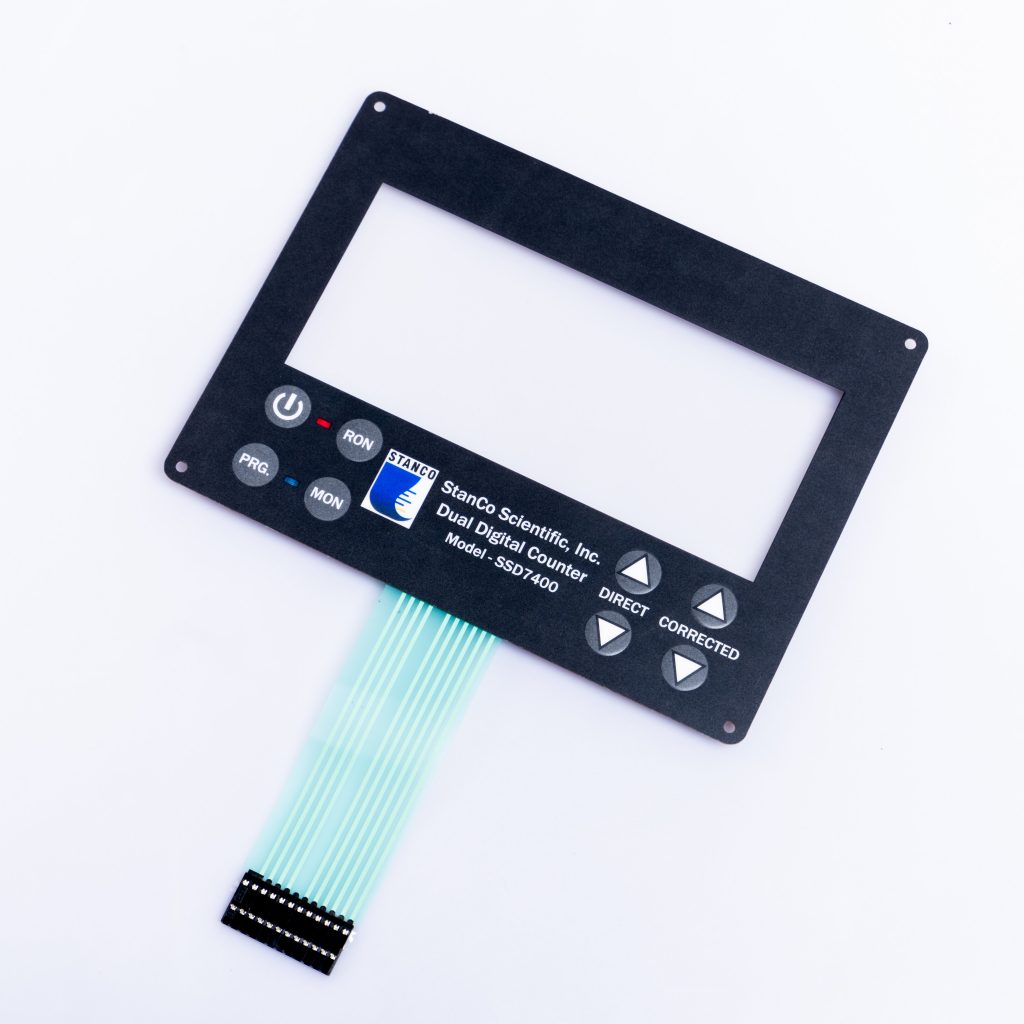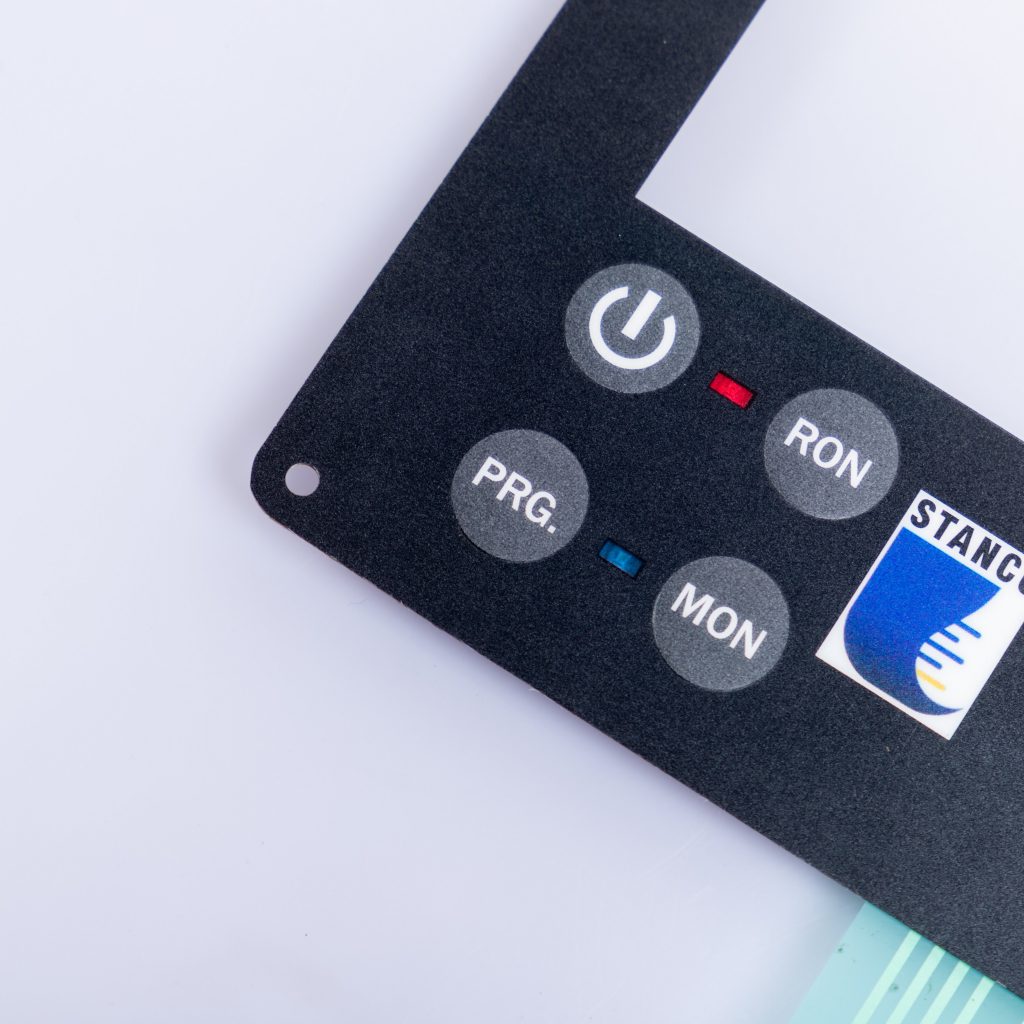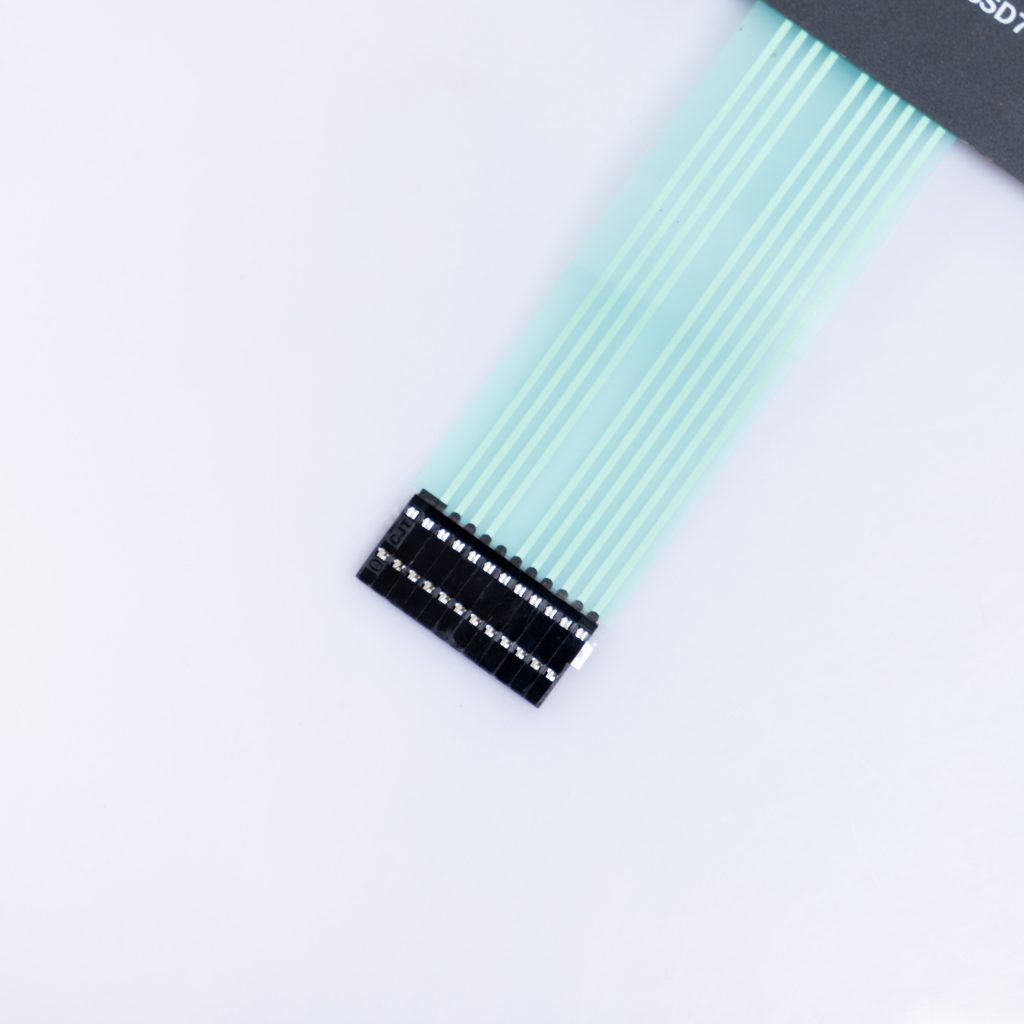Introduction
Membrane switches are widely used in various electronic devices and control panels to provide user-friendly interfaces. These switches often incorporate LED lights to enhance visibility and user experience. However, LED failures can occur in membrane switches, leading to issues such as decreased illumination, flickering, or complete LED malfunction. Understanding the causes behind LED failures is crucial for manufacturers and users alike. In this article, we will analyze common issues related to membrane switch LED failures, their causes, and potential solutions.
Common Issues in Membrane Switch LED Failures
Dim Illumination
Dim illumination is a frequent problem encountered with membrane switch LEDs. When the LEDs fail to provide adequate brightness, the readability of the switch may be compromised, affecting user experience and functionality. Dim illumination can result from various factors, including:
- Insufficient power supply: Inadequate power supply to the LEDs can lead to reduced brightness. This can occur due to improper wiring, damaged power traces, or low voltage supply.
- LED aging: Over time, LEDs may lose their brightness due to natural aging. This is a common phenomenon, especially for switches that have been in use for extended periods.
Flickering LEDs
Flickering LEDs are another common issue that can affect membrane switches. Flickering refers to the rapid and irregular fluctuations in LED brightness. Flickering LEDs not only compromise the aesthetics of the switch but also indicate potential underlying issues. Some common causes of LED flickering include:
- Loose or damaged connections: Poor connections between the LED and its driver circuit can cause flickering. Loose wiring, faulty solder joints, or damaged traces can disrupt the flow of electrical current, leading to intermittent LED operation.
- Inadequate current control: LED flickering can also occur when the current supplied to the LEDs is not properly regulated. Variations in current can cause flickering or unstable illumination.
Complete LED Failure
Complete LED failure refers to the scenario where the LED does not illuminate at all. This can render the switch ineffective and disrupt the user’s ability to interact with the device. Several factors can contribute to complete LED failure, including:
- Manufacturing defects: Defects in the LED itself or its integration into the membrane switch can result in complete failure. This can be attributed to issues such as poor soldering, incorrect component selection, or physical damage during assembly.
- Environmental factors: Exposure to extreme temperatures, moisture, or other environmental stressors can cause LEDs to fail prematurely. Environmental factors can degrade the LED’s performance or cause irreversible damage.
Analysis and Potential Solutions
Insufficient Power Supply
To address dim illumination issues caused by insufficient power supply, manufacturers and users can take the following steps:
- Verify power source: Ensure that the power source for the LED is providing the correct voltage and current requirements specified by the manufacturer.
- Check wiring integrity: Inspect the wiring connections to ensure that they are secure, free from damage, and properly connected to the power source and LED. Repair or replace any damaged wires or connectors.
- Evaluate power traces: Examine the power traces on the membrane switch for any signs of damage or degradation. Repair or replace damaged traces as needed.
LED Aging
LED aging is a natural process that occurs over time. While it is challenging to prevent LED aging entirely, manufacturers can mitigate its effects by implementing the following measures:
- Optimal LED selection: Choose high-quality LEDs with a long lifespan. Consult LED manufacturers or suppliers for recommendations on LEDs known for their longevity.
- Proper power management: Implement power management techniques that prevent excessive current flow through the LEDs, which can accelerate aging. Use resistors or current-limiting devices to regulate the current supplied to the LEDs.
Loose or Damaged Connections
To address flickering LED issues caused by loose or damaged connections, consider the following solutions:
- Inspect connections: Thoroughly examine the connections between the LED and its driver circuit. Ensure that all connections are secure and free from damage.
- Resolder or replace components: If loose or damaged connections are identified, resolder or replace the affected components. This ensures a stable electrical connection, reducing the chances of flickering.
Inadequate Current Control
To tackle LED flickering caused by inadequate current control, consider the following measures:
- Current regulation: Implement current-limiting mechanisms such as resistors or constant-current drivers to regulate the current supplied to the LEDs. This helps maintain stable illumination and prevent flickering.
- Verify driver circuitry: Check the driver circuitry for any faults or malfunctioning components. Repair or replace any faulty components to ensure proper current control.
Manufacturing Defects
Manufacturing defects leading to complete LED failure can be addressed through the following actions:
- Quality control measures: Implement stringent quality control processes during the manufacturing of membrane switches to detect and rectify potential defects early on. Conduct thorough inspections and tests to ensure the integrity of LED integration.
- Component selection: Choose reputable suppliers and manufacturers for LED components. Opt for high-quality LEDs and ensure proper assembly techniques to minimize the risk of manufacturing defects.
Environmental Factors
To mitigate LED failures caused by environmental factors, consider the following precautions:
- Environmental testing: Conduct comprehensive environmental testing to evaluate the performance and durability of the membrane switches under different conditions. This helps identify potential weaknesses and make necessary design improvements.
- Protective measures: Implement protective measures, such as conformal coatings or sealing techniques, to safeguard the LED and other components from moisture, temperature fluctuations, and other environmental stressors.
Conclusion
Analyzing and understanding the common issues related to membrane switch LED failures is crucial for manufacturers and users alike. By identifying the causes behind dim illumination, flickering LEDs, and complete LED failures, appropriate solutions can be implemented. Addressing issues such as insufficient power supply, LED aging, loose connections, inadequate current control, manufacturing defects, and environmental factors can help ensure the reliability and longevity of membrane switch LEDs. Through proactive measures and continuous improvement, manufacturers can deliver high-quality membrane switches that meet the expectations of customers in terms of performance and durability.


